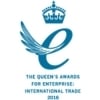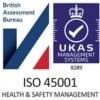Like any industry, the metal casting industry and foundries are full of time saving sayings, shortenings, acronyms and jargon that can catch a layman off guard if they’re not expecting it.
At MRT castings, we do everything we can to ensure that you are confident in our processes and, as such, the finished products. Part of helping you to feel confident is giving you the info you need to make an informed decision.
Here is a quick reference guide for all the terms you may hear us use:
Aging – Freshly cast metal alloy properties will change slowly at room temperature, known as natural aging. This process can be sped up with increased heat, known as artificial aging. This process ensures quality and accuracy in tight tolerance specifications.
Alloy – An alloy is a base metal, smelted together with another element (often another metal, but can be carbon, silicon, etc.) to produce a material with different advantageous properties.
Annealing – Heating a metal to a specific temperature and allowing it to cool slowly to remove internal stresses and toughens the material.
As-Cast – This term refers to a casting's state as it is removed from a mould - "these castings have a surprisingly smooth finish in as-cast condition"
Batch – A run of products. Large batches are, generally, more cost efficient than small batches.
Billet – A billet is a solid length of material that has been formed (extruded) into shape by casting or hot-rolling, often used in machining.
Binder – An additive for sand used in sand casting to ensure that the mould maintains shape and strength.
Burn-on – Sand that has adhered to the surface of the casting during the process
CAD – Computer Aided Design - Anything designed using a computer, this could be products, moulds and tooling.
CAM – Computer Aided Manufacture - The implementation of CAD using machinery, often using CNC machinery.
Cast – Something that has been created by pouring molten material into a mould and allowed to harden.
Casting – The process of pouring molten metal into a mould and allowing it to harden
Cavity – The area within a mould that forms the shape of the final product when filled with molten material.
CNC – Computer Numeric Control - Machinery that is primarily or solely controlled using commands from a computer program.
Cold Shut – A casting defect caused when molten material within a mould cools prematurely and doesn't adhere to other molten metal.
Compressive Strength – The strength that a material or object has against a crushing or compressing force. The opposite of tensile strength
Die – The mould tool used to produce a casting during die casting.
Die Casting – The process of injecting molten material into a die (under high pressure, or under natural gravity), allowing it to cool and resulting in a cast shape.
Draft – The amount of taper for a cast part perpendicular to the parting line (the direction it's removed from the mould), allowing the part to be removed from the mould easily.
Ejector Pins – Small pins that "push" the cast part from the mould automatically.
Ferrous – Indicates the presence of iron in a metal. Conversely, non-ferrous indicates a lack of iron.
Finishing – The act of improving a casting's surface for more favourable characteristics, i.e. polishing, painting, chroming, anodising etc.
Fixture – A tool used to hold a cast or machined product for further work. See: Tool.
Flashing – Material that has solidified in the parting of the mould/die, resulting in a thin wafer of material around the casting which needs to be removed.
Forged – Material, usually metal, that has been heated until soft enough to force into shape. Traditionally done with a hammer and anvil, but now done with power tools.
Foundry – A factory in which metal products are manufactured.
Furnace – A device designed for the high temperature heating of material, often used to melt metal.
Gas Porosity – A metal casting defect caused by gas bubbles forming in the casting.
Gate – The area within a mould in which molten material enters the mould cavity.
Hardening – A heat treatment of metal using rapid heating and cooling to improve the hardness of the material.
ISO – International Standards Organisation - Usually followed by a number, indicating that something has reached the international quality standard required
Jig – A tool used to hold a cast or machined product for further work. See: Tool.
Machining – A term used to describe the process of cutting away material on a machine such as a Manual or CNC Mill.
Mechanical Assembly – Assembling multiple parts of a product into the finished, or near finished, product.
Melt – A collective term for the stock of molten material.
Mould – The form used to produce a casting during a casting process.
Parting Line or Split Line – The line created on the casting where two halves of the mould join together.
Riser – A cavity within the mould designed to retain heat and molten material in order to prevent heat related shrinkage, cavitation and other casting defects.
Runner – The main route within a mould that channels molten material towards the cavity.
Shrinkage – A gap or defect on a casting caused by molten metal shrinking incorrectly after casting.
Solidworks – The primary 3D CAD software used at MRT to design castings, moulds and fixtures.
Sprue – A smaller 'runner' that leads towards individual casting cavities.
Tensile Strength – The strength of a material against 'pulling' forces. The opposite of compressive strength.
Tolerances – The tiny variance in dimensions expected (or allowed) during manufacture.
Tool – A specific tool used during a part's manufacture when an off-the-shelf tool will not suffice.
Tool Making – The process of building 'tools' for manufacture.
Wall Thickness – The thickness of a cast part's wall.
If you’ve got any questions, or feel that we’ve missed something from this list, please get in touch and we’ll be glad to help (and update our list).









